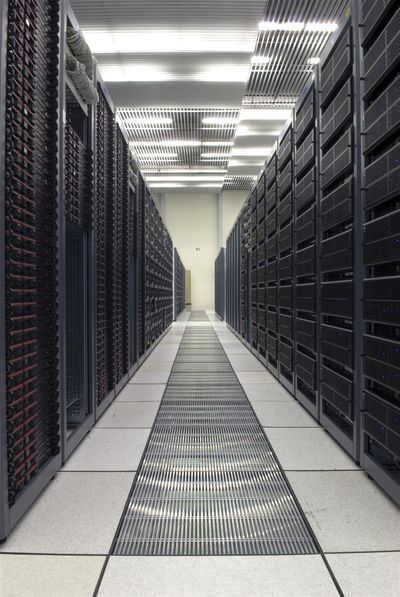CERN fires up atom smasher
Scientists attempt to study big bang theory by re-enactment

GENEVA – It has been called an Alice in Wonderland investigation into the makeup of the universe – or dangerous tampering with nature that could spell doomsday.
Whatever the case, the most powerful atom smasher ever built comes online Wednesday, eagerly anticipated by scientists worldwide who have awaited this moment for two decades.
The multibillion-dollar Large Hadron Collider will explore the tiniest particles and come ever closer to re-enacting the big bang, the theory that a colossal explosion created the universe.
The machine at CERN, the European Organization for Nuclear Research, promises scientists a closer look at the makeup of matter, filling in gaps in knowledge or possibly reshaping theories.
The first beams of protons will be fired around the 17-mile tunnel to test the controlling strength of the world’s largest superconducting magnets. It will still be about a month before beams traveling in opposite directions are brought together in collisions that some skeptics fear could create micro “black holes” and endanger the planet.
The project has attracted researchers of 80 nationalities, some 1,200 of them from the United States, which contributed $531 million of the project’s price tag of nearly $4 billion.
“This only happens once a generation,” said Katie Yurkewicz, spokeswoman for the U.S. contingent at the CERN project. “People are certainly very excited.”
The collider at Fermilab outside Chicago could beat CERN to some discoveries, but the Geneva equipment, generating seven times more energy than Fermilab, will give it big advantages.
The CERN collider is designed to push the proton beam close to the speed of light, whizzing 11,000 times a second around the tunnel 150 to 500 feet under the bucolic countryside on the French-Swiss border.
Once the beam is successfully fired counterclockwise, a clockwise test will follow. Then the scientists will aim the beams at each other so that protons collide, shattering into fragments and releasing energy under the gaze of detectors filling cathedral-sized caverns at points along the tunnel.
CERN dismisses the risk of micro black holes, subatomic versions of collapsed stars whose gravity is so strong they can suck in planets and other stars.
But the skeptics have filed suit in U.S. District Court in Hawaii and in the European Court of Human Rights to stop the project. They unsuccessfully mounted a similar action in 1999 to block the Relativistic Heavy Ion Collider at the Brookhaven National Laboratory in New York state.
CERN’s collider has been under construction since 2003, financed mostly by its 20 European member states. The United States and Japan are major contributors with observer status in CERN.